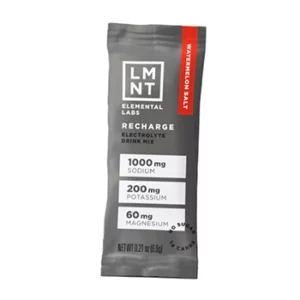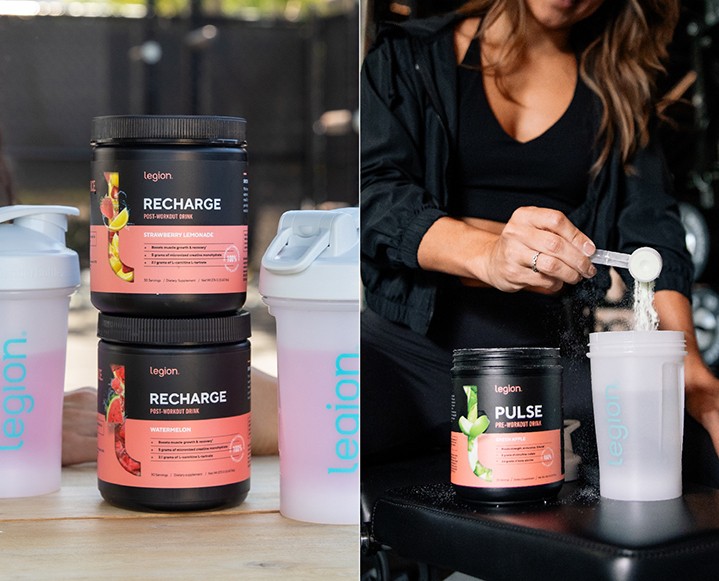A weekend escape does wonders for the soul, but not so much for the diet. Whether we find ourselves in the airport, at a road trip gas station, inside a hotel room or even a friend’s home, every healthy eater knows what it feels like to be trapped in a “food desert”.
What to do? Functional medicine guru, Dr. Mark Hyman, has a few practical ideas for planning ahead and stocking up while on the go. Here’s how to survive outside of your everyday Whole Foods radius…
I’ve traveled to towns where I’ve felt forced to make the most of what is available – and the options weren’t very impressive. When it comes to healthy eating on the go, sometimes you have to improvise and do the best you can with what you have.
It’s not your fault you can’t find real food in the average American town. The food industry conspires to keep real food off the shelves because it’s simply not as profitable to sell vegetables, fruits and nuts as it is to sell snack cakes, candy bars and chips. Yet even in those situations, there’s hope. You can find healthy foods just about anywhere, even if it isn’t as abundant as junk food. You don’t need access to farmers’ markets, gourmet food stores or even health food stores. You can visit your regular grocery store and usually find what you need.
In even the worst situations, I use these seven ways to improvise and make the best possible choices in what seems like the most hopeless food deserts…
Stash healthy food staples. Convenience stores and airport kiosks are invitations to eat junk food. If you’re going to be driving, I recommend taking healthy staples from home like almond butter, nut milk, coconut oil, wild-canned fish, olive oil, nuts and seeds and other nonperishable items. If you’re flying, make room for some of these items in your bags.
Keep a carry-along cooler in your backseat. My favorite secret weapon while road tripping is to stash my favorite emergency kit snacks. I carry dry goods but also fresh foods like celery, carrots, snap peas and radishes – easy finger foods that tend to hold their fresh crunch, especially in the cooler. Apples, berries, pomegranate seeds, avocados and lemons also fare well on the road. If you want something sweet, carry a 70-percent raw, organic dark chocolate bar to prevent those candy bars from calling your name at the gas station.
Place an order online. Before I travel, I place an order for all of my favorite healthy foods and snacks to bring along. Thrive Market carries all of my favorite guilt-free snacks and staples. If online shopping feels easier (it sure does for me!), sign up for Thrive online. If you can, have your order delivered to your destination as a “hostess gift” – that way you are contributing healthy snacks and thanking your hosts for their hospitality at the same time!
Locate the closest food stores. Seek out grocery and/or health food stores as soon as you arrive at your destination. Make a shopping list before you hit the grocery store to save you from wandering the aisles aimlessly and buying junk food impulsively. Stick to the store’s periphery, or more specifically, the produce section, which has most of what you’re looking for. After all, whole, fresh foods are stocked on the outside walls, not the inside shelves. If purchasing beef or meat, choose grass fed, hormone-free or organic whenever possible.
Load up on essentials. If you aren’t able to travel with these, pick them up once you’ve arrived at your destination. Mine include extra-virgin olive oil, coconut oil, nuts and seeds, nut milks, coconut milk, olives, apple cider vinegar or balsamic vinegar, sea salt, black pepper, and any other spices you might need.
Dine out smartly. If your family or friends want to eat out, research local restaurants online and suggest a few options that work for you. Most people are happy when someone else makes the decision, and choosing puts you in the driver’s seat to find healthy options. Most places have online menus. Look for those with high-quality foods like grass-fed beef, wild-caught fish and organic produce. Restaurants usually have side dishes like steamed veggies or sweet potatoes. Likewise, almost any restaurant can make a grilled fish or chicken dish with a large plate of vegetables steamed or sautéed in olive oil. Anything glazed, breaded or drowning in a sugary sauce should be a red flag to stay away. If your entrée is served with a gluten grain or starchy carbohydrate, simply ask to substitute with a green vegetable instead. Easy and done!
Connect in the kitchen. Rather than go out, use gatherings as an opportunity for you to connect with your family and friends in the kitchen. Introduce your loves ones to new, healthy recipes you’ve been enjoying. That way, you can control the ingredients and types of foods you’ll be having.















